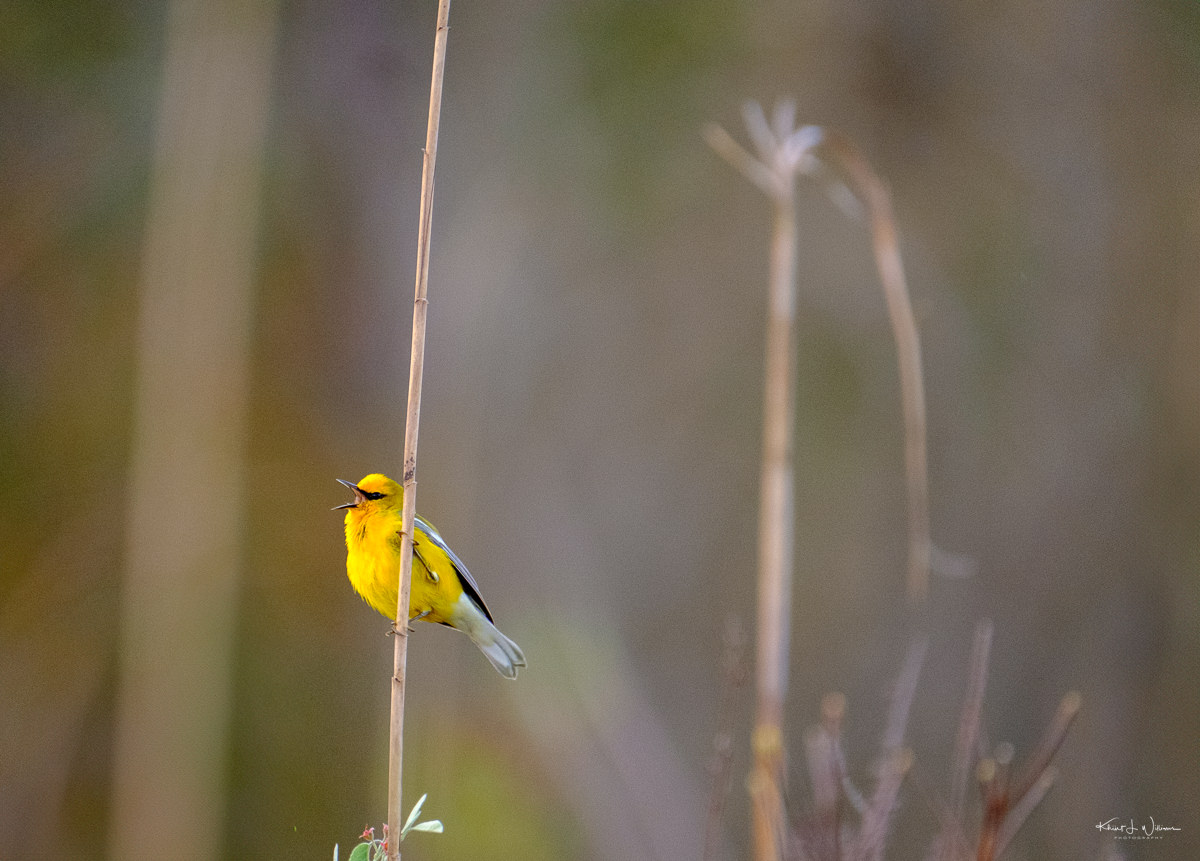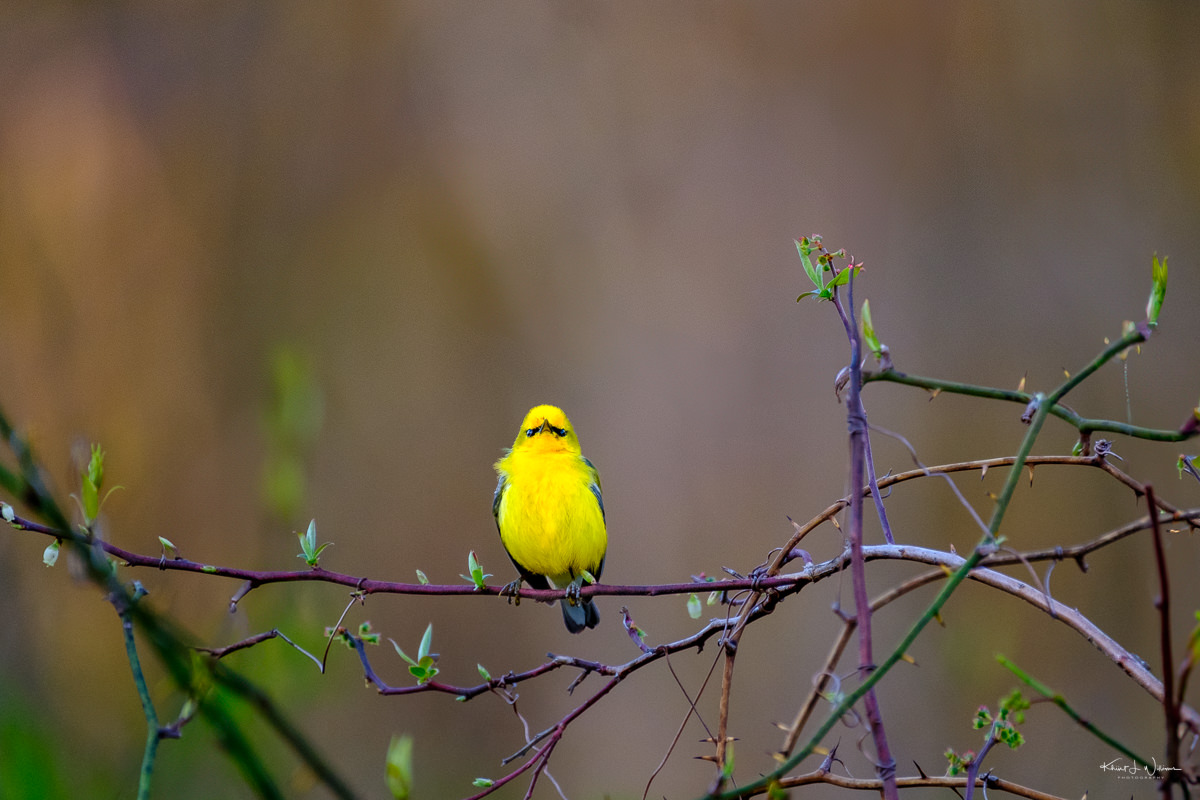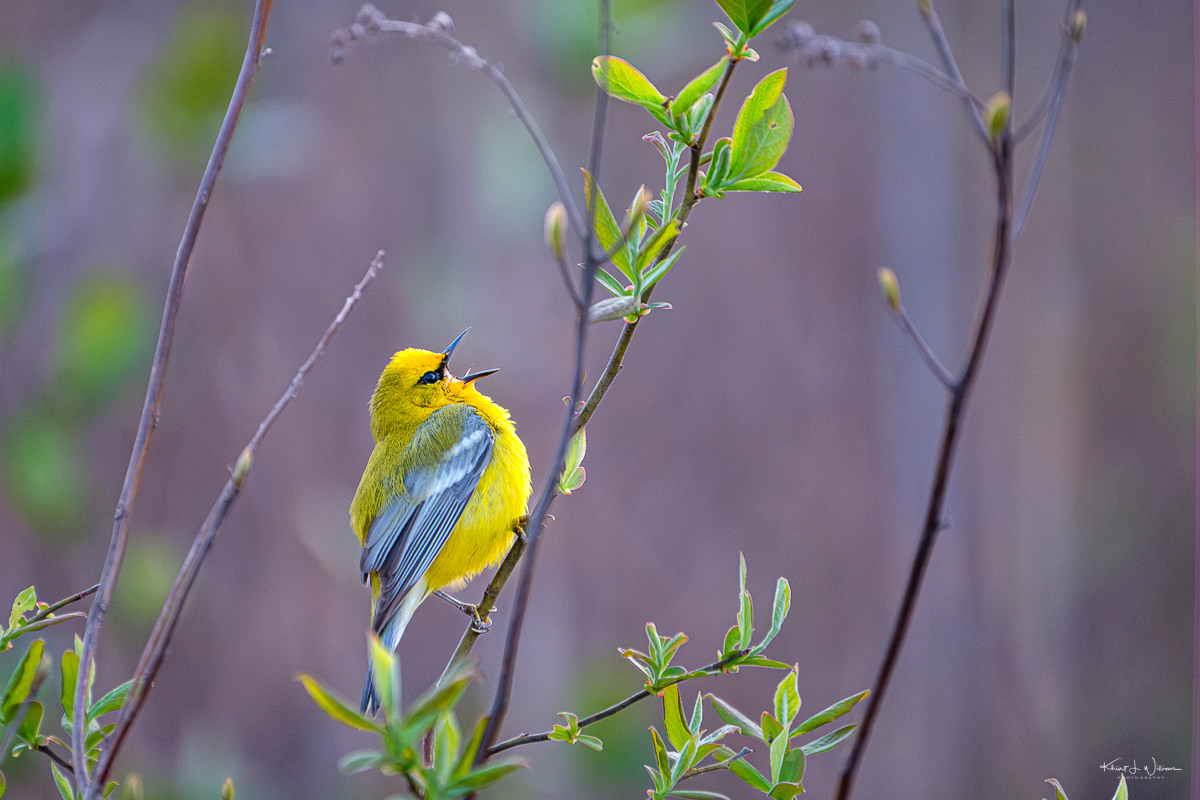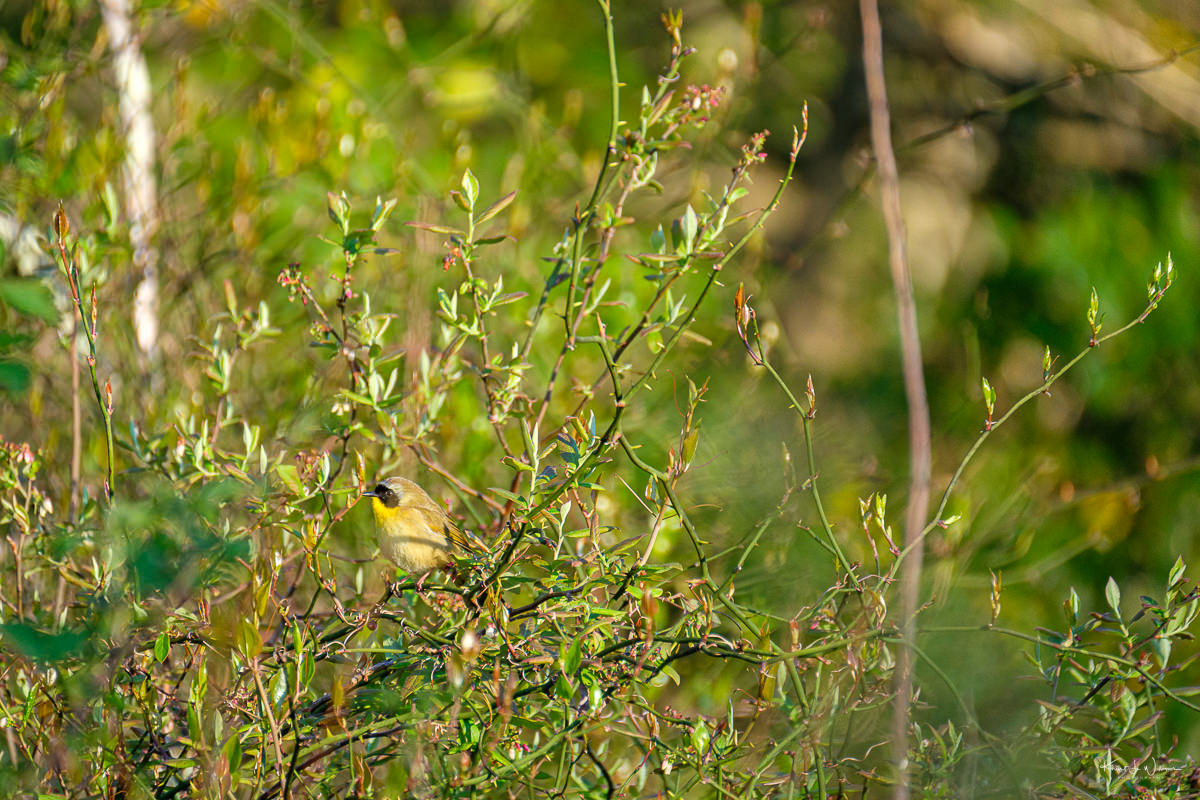I took hundreds of photographs of this bird during the field trip with Ray to an area near Bear Swamp Preserve. I love the bright yellow features and blue-grey feathers. I was even blessed with a warbling performance.
The Blue-winged Warbler (Vermivora cyanoptera) is a small songbird belonging to the Parulidae family. It is primarily found in eastern North America, particularly in deciduous forests and woodland edges. This species has a distinctive appearance with blue-grey wings, yellow underparts (yes, bird wear pants), and a pale yellow-green back. It feeds primarily on insects and spiders, foraging in shrubs and low vegetation.
During the breeding season, the Blue-winged Warbler constructs cup-shaped nests made of grasses, leaves, and bark strips, typically placed in shrubs or small trees. It lays a clutch of 4-6 eggs, which are incubated for about 10-12 days.

The Blue-winged Warbler is known for its relatively short migratory range compared to other warbler species, often wintering in the Caribbean and Central America. Conservation efforts for this species often focus on preserving its woodland habitats and managing factors that may impact its breeding success and survival.

You can learn more about Ray Hennessy's work and sign up for his workshops on his website]. You can learn more about the Blue-winged Warbler at the Cornell Lab All About Birds website.


